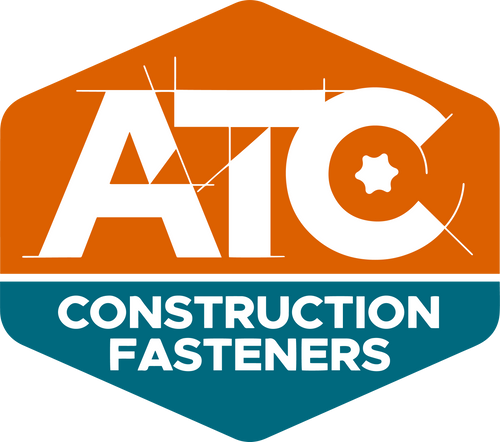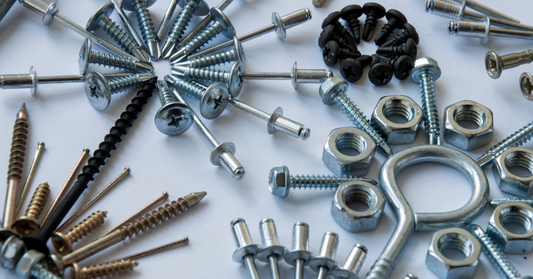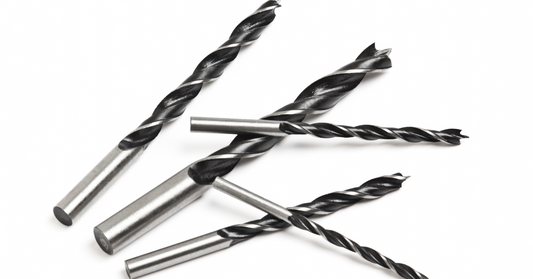Half of the decks—30 million of them—in the US are in danger of collapse. With the US having a strong DIY culture, it’s possible the DIY-er went with decking materials that just don’t fit their environment or maybe they didn’t use the best techniques when installing their decks.
There are loads of DIY deck-building videos out there, but how can you tell if you're watching one that the pros would actually back?
We’ve talked to our in-house decking specialists, and they came up with a foolproof guide on how to build a deck that will last.
We've put together a list of all the tools you'll need, the best decking materials for your space, and the pro tips that will give you the peace of mind that you’re constructing a safe and durable deck for your family.
|
Skill Level |
Cost |
Estimated Time |
|
Intermediate |
$960 to $4,800 ($9,600 to $19,200 if you hire a deck contractor) |
1 to 3 weeks (including the one week for the concrete to cure) |
Tools and Materials
|
Tools |
Materials |
|
Pencil |
Concrete Mix |
|
Circular Saw & Blades |
All-purpose gravel |
|
Reciprocating Saw & Blades |
Concrete Tube Form |
|
Drill/Driver and Bits |
Mason Line |
|
Hand Saw |
Waterproofing tape or silicone sealant |
|
Torque wrench |
Landscape Fabric |
|
Tape Measure |
|
|
Chalk |
Pressure Treated Lumber: |
|
Speed Square |
2-in x 2-in for the balusters and batter boards |
|
Framing Square |
2-in x 4-in for the diagonal bracing |
|
Level |
2-in x 8-in for the framing and joists |
|
Line Level |
2-in x 10-in for the beams |
|
Post Level |
4-in x 4-in for the posts |
|
Shovel |
5/4-in x 6-in deck boards |
|
Post Hole Digger (or rent an auger) |
Simpson Strong-Tie Products: |
|
Digging Bar |
ABA Adjustable Post Base |
|
Garden Rake |
Titen HD 5/8 in. x 6 in. Heavy-Duty Screw Anchor |
|
Garden Hoe |
|
|
Wheelbarrow |
LPCZ™ Light Post Caps |
|
Trowel |
|
|
Saw Horses |
7’’ L bracket (L70Z) |
|
H2.5A Hurricane Tie |
|
|
LUS28Z Joist Hangers |
|
|
DTT2Z Guard Rail Tension Tie (brackets) |
|
|
A23Z Framing Angles |
Building The SAFEST Deck
You may have come across concrete or plastic blocks being used as the base for decks. But what we really want to do is build a deck that lasts and helps you avoid expensive repairs down the line. The best way to go about it is by using poured concrete footings for the foundation and stainless steel screws (especially since we're using pressure-treated wood).
We will also put in stairs and railings. For larger decks, parting boards will be placed in the middle of the decking to add more structural integrity and a nicer look.
1. Planning and Design

Before you begin building your deck, make sure to talk to your local building department and homeowners association about any permits and building requirements you need to follow. Make sure to call 811 to locate any underground utility lines before you start digging.
Be sure to have plenty of space for your outdoor furniture and to move around easily. Deck boards usually measure 5 and a half inches in width, so it's a good idea to plan your deck size carefully to prevent having narrow pieces at the ends.
Design your deck easily with the Simpson Strong-Tie Deck Planner Software™. It’s a free web-based app that provides 3D visuals along with all the specs—live dimensions, structural hardware, materials lists—you need to build a safe and beautiful deck.
2. Deck Layout
Mark the layout with strings and batter boards made from 2x2 lumber and exterior screws. Step back batter boards about a foot in either direction, so you can have plenty of room when you dig for post holes. Attach strings to them to indicate the deck's height and outer edges.
Set up one stake next to your house. See to it that the strings are close to level. The layout is square when the diagonals are equal. Adjust the strings if necessary. Use a pencil to mark the strings' final position on the batter boards so they can be removed and returned to the correct spot.
Before marking the posts, cut the sod if required by code. Home Depot or Lowes have sod-cutting tools for rent if you need to remove sod in a large area. Your deck's design, local building codes, and beam size are what determine the post layout.
3. Setting Posts
Your deck design from the Deck Planner Software™ will show the size, number, and placement of deck posts or footings.

Concrete Footers
Prevent frost heave by digging holes 6 inches below the frost line. The width should be somewhat wider than your concrete footer tubes.
Lay out landscape fabric with cut openings for each post hole. This controls weeds and assists with drainage. Fill each hole with 6 inches of all-purpose gravel and compact.
Put a concrete footer tube in the hole. It should protrude a few inches. Check that it's plumb and level.
Mix and pour concrete halfway into the tube, then eliminate air pockets and fill the rest. After the concrete has set and cured, cut away the excess cardboard. Finish covering the landscape fabric with gravel using a garden rake.
Install Post Brackets and Set Posts
We're using Simpson Strong-Tie's ABA Adjustable Post Base for the post brackets and securing them to the concrete with Titen HD 5/8 in. x 6 in. Heavy-Duty Screw Anchor.
To mark the center point of your post base, you can use a string line to align the centers of multiple footings.
Use a masonry bit that has the same diameter as the shank of the Titen HD screw. Drill into the concrete, slightly overdrilling by half an inch more than the length of your screw to ensure it doesn’t bottom out before it’s driven home.
Align the base with your previously marked points and insert the screw with a washer on top. Using your impact driver, drive the screw in but do not fully tighten it just yet.
Switch to a torque wrench to finish tightening the screw.
Secure the bracket to your deck posts with SD Connector Screws. Double-check that everything is plumb before driving in all the screws.
Level and Trim Posts
Determine the height of your posts from your deck design or the measurements you've made in Step 2.
Use a string and chalk to mark all posts. Cut posts to ensure they are level with each other and the correct height for the deck framing to attach.
4. Build the Deck Frame

Securing Beams
Start by figuring out the boards' crown. The board's slight arch, known as the crown, should always face up. Attach support beams made from two 2’’ x 10’’s. Use LPCZ™ Light Post Cap from Simpson Strong-Tie to cap the top of each post. These anchors are adjustable and come in pairs (one for each side of the beam).
Fasten the post caps to the posts with SD connector screws. Set the beams on the post caps, crown side up. Make sure any joints are over a post.
Drive 4-inch SDWS structural screws into the beams for a secure fit. Use 2 to 3 screws per joint at each end of the beam. Space the screws about 16 inches apart along the length of the beam. Place screws at least 1.5 inches from the edge of the beam to avoid splitting.
Apply waterproofing tape or silicone sealant along the top joint of the beams for a waterproof seal.
Installing Diagonal Bracing
After the beams are set up, attach diagonal bracing to the posts to stop any wobbling. Begin by placing a straight joist against the house at the edge of the deck to ensure the beams are cut to the correct length.
Mark six feet from the deck corner on the house and eight feet from the corner on the joist to get everything squared up. Move the joist so that the diagonal is 10 feet long. Measure and cut the beams.
Building the Floor Frame
Begin by marking the spacing of the floor joists on all the beams according to your building codes, usually 16 inches on center. Next, put each rim joist on a beam and mark the lines down the side of each joist. Add an X next to the lines to show where the joists will be connected.
Drill pilot holes through the rim joist into the end joist, then fasten it using Eagle Claw deck screws.
Next, attach a 7’’ L bracket (L70Z) with #9 x 1 ½’’ SD connector screws. Don't attach the other rim joists yet. Position the frame on the beams, making sure it's square. Secure it with an H2.5A Hurricane Tie, still fastening it with #9 x 1 ½’’ SD connector screws.
If your rim joists are in two parts, you can build the frame one half at a time. We're adding bracing in the middle to hold parting deck boards. Align the floor joist with the 16-inch center line at the top and drive in a Simpson SDS 1.5-inch structural screw.
Place the LUS28Z joist hanger against it and fasten it using the same SDS screws you used for your hurricane ties. Put in the remaining joists. When they're all up, strike a line with a string and cut them to the right length. Complete the frame by securing the other rim joists using hangers and structural screws.
5. Installing Decking

Mount Posts
We’re installing the posts outside of the joists.
First, figure out how far apart the posts should be based on how many you need. Begin with the posts near the house, then add posts at the outside corners, and finally, place posts at the top of the stairs.
Next, measure the distance between the two corner posts. Then, take that measurement and divide it by the distance allowed between posts according to your local building codes. Then, round up to the closest whole number. After that, take away one.
In this particular decking project, we have two posts in the middle. Ensure that the posts are spaced out evenly. If something is directly above a joist, you can move it a little bit. Trim the posts to the right size based on your deck design and local codes.
We’re using the DTT2Z guard rail tension tie to attach the posts. Along the end joist, add some extra bracing between the joists to secure the tension ties. Screw a post in place, making sure it's plumb. Line up the DTT2Z and mark the bolt hole. Drill through the joist and post.
Fasten the posts with two half-inch bolts. One bolt is positioned two inches from the top, securing the DTT2Z to the rim joists, while the other sits two inches from the bottom of the rim joists, below the DTT2Z.
Drill pilot holes to make the installation of screws easier and to prevent wood splitting. With your impact driver, drill the DTT2Z using the 2 1/2" Strong-Drive SDS Heavy-Duty Connector screws that come along with your purchase of the DTT2Z.
Put in Decking
Because of the deck’s size, first find the center of the deck. Then, put the parting boards in place and secure them with a few decking screws for now.
Begin close to the house by placing the straightest decking board level with the rim joist. Make small holes about one inch from the edge of the rim joist, and then drive in the decking screws. Keep fastening your first deck board to the joists using screws all the way along.
Next, install the rest of the deck boards. Take the board and press it against the first one. After that, make sure to fasten it with two screws in every joist.
When you’re putting down wood decking, make sure to drill pilot holes at the ends. Remember to check if they’re square every few boards.
As you approach the end, lay the final boards out without attaching them to figure out how wide the last board should be.
Don't forget to think about the overhang! If it's too narrow, you can trim a bit off the last few boards to make them wider, then smooth out the edges with a router for a more polished appearance.
We also directed the decking toward the parting boards. Once the decking is in place, draw a straight line with a one-and-a-quarter-inch overhang and trim off the extra material.
PRO Tips:
- When you lay the deck boards down, you want the crown side up. At the end of the board, you will notice that laying it crown-down forms a bowl shape, which holds water longer, whereas with the crown up, it allows the water to escape faster and keeps the board drier.
-
Install pressure-treated wood tight. Pressure-treated wood is placed with little to no gap because the wood will dry and shrink after it's put in place, which creates the right amount of space. Check with the manufacturer for the best practice.
6. Handrail Installation
Attach 2x4 rails on the back side of the posts. Make sure the bottom rail is three and a half inches above the decking, and the top rail should be even with the top of the posts. To achieve a polished appearance, place a five-quarter by six-inch rail cap in the center on top and cut the corners at an angle.
To space the balusters, grab a scrap 2x4. First, make sure to drill pilot holes in each baluster. Then, use deck screws to fasten them to the top and bottom rails.
7. Stairs

Determining the Bottom Step:
Place a level on top of the decking.
Measure the height at the point where you want your steps to end.
Calculate the Rise and Run
Set a long level on top of the decking to measure the height from the deck down to where the steps will end.
Divide this measurement by 7 inches (the ideal height for each step) to determine the total number of risers needed. Divide the total height by the number of risers to get the actual height of each riser.
The horizontal part (run) of each step is commonly set at 11 inches using two 5/4 x 6-inch deck boards.
Lay Out the Landings:
Create a wooden frame to outline the landing area. It should extend 36 inches beyond the stairs. Place the frame on the desired location and mark the area.
Dig a 4-inch deep foundation within the marked area. Fill the foundation with gravel, compacting it well. Then, wet the concrete.
Ensure the frame is level and slopes slightly away from the deck for water runoff. Wet the gravel and inside of the frame before pouring mixed concrete into it.
Level the concrete with a screed made from a straight 2x4.
When the concrete starts to set but is not fully hard, smooth it with a float. Create a non-slip texture by brushing the surface with a stiff broom.
Finish the edges and cure the concrete as per manufacturer instructions, spraying it gently and applying sealant for protection.
Prepare and Cut Stringers:
Using the measurements for the rise and run, lay out the steps on 2x12 stringers. Use stair gauges on a framing square to mark the rise and run on the 2 x 12s.
Cut the stringers with a circular saw, finishing the corners with a handsaw to prevent overcutting.
Install the Stringers:
Attach a 2x8 board along the rim joist of the deck to mount the stringers. For attaching stringers directly to the deck, use the LSC Adjustable Stringer Connector for a strong and secure attachment.
At the bottom, place a wood plate anchored into the concrete footing using Stainless Steel Titen HD heavy-duty screw anchors.
Fasten each stringer to the plate using A23Z framing angles to strengthen the joint.
Attach the Treads and Risers (Toe Kicks):
Use 2 x lumber as risers and 5/4 x 6 decking boards side by side on each step as treads.
Secure each tread (the part you step on) and riser (vertical section between treads) using deck screws. The treads should stick out about an inch beyond the risers.
Install the Railings:
Attach 4x4 posts at the bottom of the stringers and along the deck where needed. Install them the same way you installed posts on the deck (using the DTT2Z guard rail tension tie).
Attach 2 x 4 rails to the 4 x 4 posts for the top and bottom rails. Center a 5/4 x 6 rail cap on top of the rails.
Space and attach balusters between the top and bottom 2 x 4 rails.
Add a finishing touch by routing the edges of the treads and rail caps for a smoother look.
The Best Decks Are Built with The Best Screws
Now that you're confident you're following the professionally-approved deck building guide, you also need to have confidence in using the right screws for your deck.
And finding the right screws starts with locating a reliable supplier of deck-building screws. ATC Construction Fasteners has experienced decking experts at its core and has tried and tested all the structural and deck screws they offer.
Build a deck the same way professionals do: build it with ATC Construction Fasteners products.
FAQs
Frequently Asked Questions on Deck Building
How to build a deck on uneven ground?
Try to make the area as flat as you can by either adding or removing soil. Try using adjustable deck supports that you can change to different heights. This way, you can keep your deck frame level, even if the ground underneath is uneven.
How can one construct a deck without digging holes?
You can build a deck without having to dig holes by using concrete blocks, which are often called deck blocks or pier blocks. They rest right on the ground and are made to support the posts or frames of the deck without doing any digging.
Concrete blocks are not as strong or stable as cast concrete footings, especially in areas with harsh weather and lots of ground movement. At the very least, we suggest that you don’t install them directly onto grass, but rather dig down to bare earth.
Can you build a deck without a permit?
The rules for constructing a deck without a permit depend on the local building codes and ordinances in your area.
There is a size threshold for the largest deck without a permit that you can construct. Many places define this as a deck that is not attached to a home, under 200 square feet, and below 30 inches above ground level.
Check with your local building department before starting your deck-building project.




